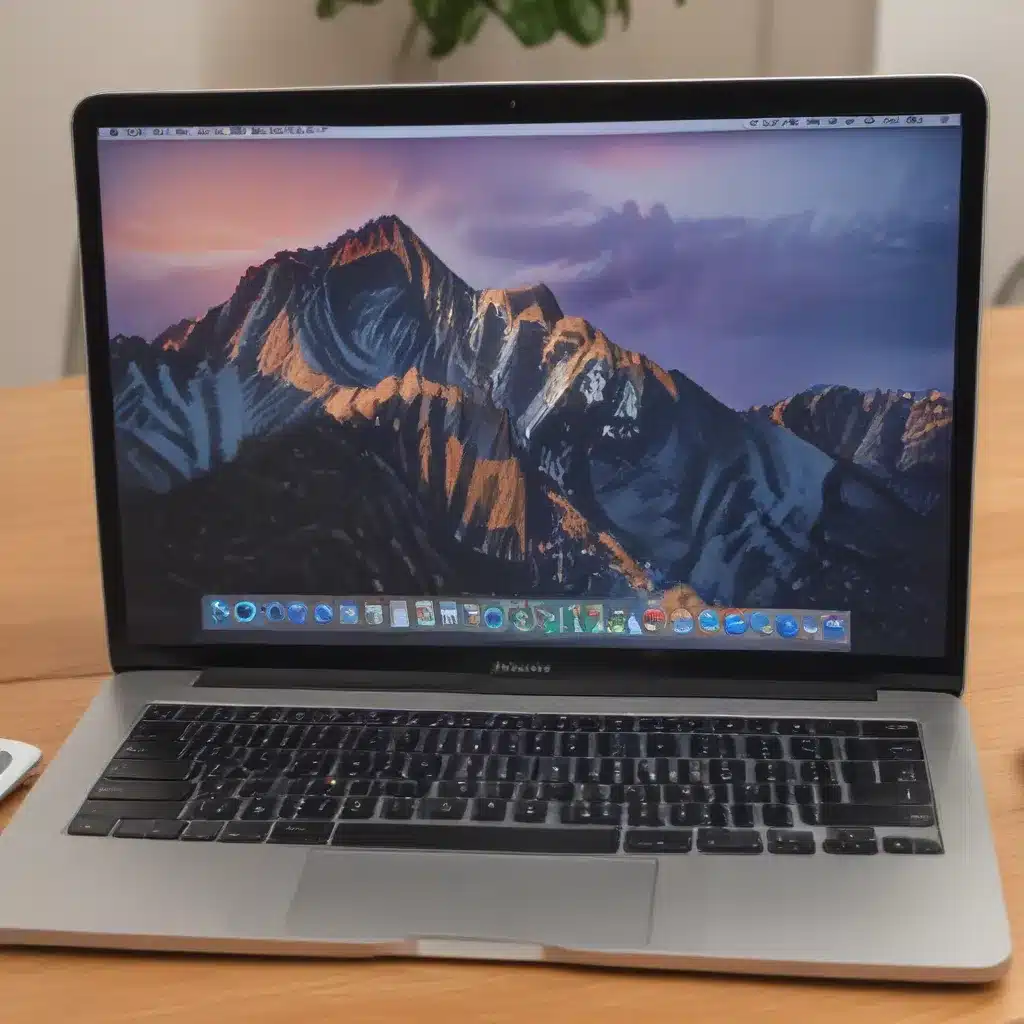Slow Startup Got You Down? Not for Long!
As a long-time Mac enthusiast and self-proclaimed tech wizard, I’ve seen it all when it comes to computer woes. From stubborn software glitches to full-blown hardware meltdowns, there’s no issue I can’t tackle. But you know what really grinds my gears? A sluggish startup. It’s like trying to sprint through molasses – frustrating, inefficient, and just plain annoying.
If your beloved Mac has been taking its sweet time to boot up lately, fear not! I’m here to share my tried-and-true tips to get your machine humming along like a well-oiled machine. Trust me, after implementing these strategies, you’ll be back to enjoying that satisfying “ding” of your Mac springing to life in no time.
Tame Those Troublesome Login Items
One of the primary culprits behind a slow startup is an overabundance of login items – those pesky scripts and applications that automatically launch when you power on your Mac. It’s like having a bunch of backseat drivers trying to give directions at the same time; it just creates chaos.
To reign in these startup-slowing offenders, I recommend using a tool like [CleanMyMac X][1]. This all-in-one problem solver allows you to easily manage your login items, keeping only the essentials and banishing the rest to the digital abyss. Just a few clicks, and you’ll reclaim valuable seconds (or even minutes!) off your boot time.
And if you really want to get surgical, you can also use the System Settings app to manually prune your login items. Simply head to the General tab, select Login Items, and give that list a good once-over. Remember, less is more when it comes to a speedy startup.
Ditch the Dreaded Disk Encryption
Another common culprit behind a sluggish Mac boot is the ever-popular FileVault encryption. Now, I know what you’re thinking – “But Jared, my data is so important! I can’t just leave it out there for the world to see!” I hear you, I really do. However, the performance hit you take from FileVault can be significant, especially on older Macs.
If you’re not dealing with any sensitive information that absolutely requires encryption, I’d recommend turning FileVault off. [According to Apple’s support site][2], this can make a noticeable difference in your startup times. Of course, the decision is ultimately yours, but if speed is your top priority, this is a sacrifice worth considering.
Dive into Safe Mode
When all else fails, there’s one surefire way to get to the bottom of your startup woes: safe mode. This special boot process loads your Mac with a bare-bones configuration, skipping all those pesky login items and launch agents that can cause slowdowns.
The process differs slightly depending on whether you have an Intel-based Mac or one of the shiny new Apple silicon models, but the general idea is the same. [For Intel Macs, you’ll want to hold down the Shift key during boot][3], while Apple silicon users should press and hold the power button until the startup options window appears, then select the gear icon and choose “Safe Mode.”
Once in safe mode, take a moment to observe how quickly your Mac springs to life. If it’s significantly faster, you’ll know you’ve got some cleanup to do on the login items and launch agents front. From there, you can methodically reintroduce them and identify the culprits.
Slay the Startup Saboteurs
Of course, no discussion of slow Mac startups would be complete without addressing the dreaded malware threat. Those sneaky viruses and trojans love nothing more than burrowing their way into your system and hogging valuable resources, effectively crippling your boot times.
Fortunately, there’s an easy solution: [CleanMyMac X’s malware scanning capabilities][1]. This trusty tool uses a constantly updated database to detect and remove any unwanted guests making themselves at home on your Mac. Just give it a quick spin, and you’ll be well on your way to a blazing-fast boot.
And if you really want to stay one step ahead, enable CleanMyMac X’s real-time and background malware monitors. They’ll keep a watchful eye on your system, alerting you the moment anything suspicious tries to sneak in. It’s like having your very own cybersecurity bodyguard, always on the lookout for trouble.
The Need for (macOS) Speed
Of course, no discussion of Mac optimization would be complete without addressing the importance of keeping your operating system up-to-date. Apple is constantly releasing new versions of macOS, each one packed with performance enhancements, bug fixes, and security improvements.
So, if you’ve been putting off that latest macOS update, now’s the time to bite the bullet. Head to the App Store, check for any available updates, and let your Mac work its magic. You might be surprised at just how much of a difference a fresh installation of the latest and greatest macOS can make.
And while you’re at it, take a moment to give all your other apps a quick update as well. Outdated software can be a major drag on system performance, so keeping everything current is key to maintaining that lightning-fast startup.
Wrapping Up: A Speedy Mac Is Just a Few Clicks Away
There you have it, my fellow Mac enthusiasts – a arsenal of tips and tricks to banish those slow startup woes for good. From managing login items to tackling malware, we’ve covered all the bases to help you reclaim those precious seconds (or minutes!) of precious boot time.
So, what are you waiting for? Grab that cup of coffee, roll up your sleeves, and let’s get to work. Your Mac is counting on you to set it free from the shackles of sluggishness. With a little elbow grease and a healthy dose of tech-savvy know-how, I have no doubt you’ll be booting up faster than a speeding bullet in no time.
Happy computing, my friends!
[1]: https://macpaw.com/how-to/mac-slow-startup
[2]: https://support.apple.com/guide/mac-help/if-your-mac-runs-slowly-mchlp1731/mac
[3]: https://www.avast.com/c-how-to-speed-up-mac













